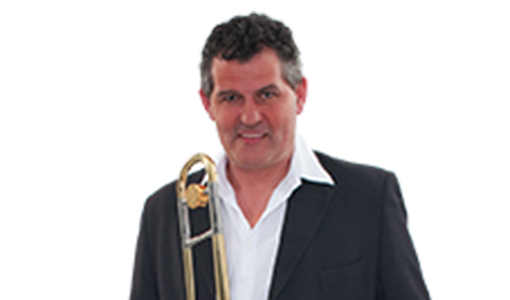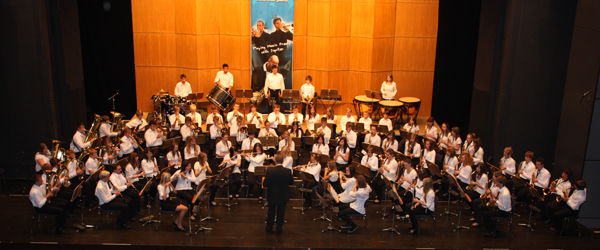The World’s Greatest Hobby
Despite active and unabated child and youth work, most music societies and music academies struggle to attract new members and to inspire them to take up one of the world’s greatest hobbies—playing in an ensemble.
To survive, associations need to try out fresh ideas, which boils down to recruiting new members.
Shrinking Process
There are many multi-faceted reasons for the dwindling membership, and they need to be considered from all angles. Is it essentially due to the association? Is it not hip enough? Are youngsters too addicted to their smartphone? How visible are music societies to the eyes of the public? Are they present on social networks? What about local TV channels? What about the older generation, people who want to reconnect with their instrument, or beginners? Do they have access to the internet or do we need to knock on their doors? Or could it be due to the decreasing readiness of most people to commit to regular classes, rehearsals and/or performances? Couldn’t it be that such a regular activity and the real-life friendship you get from being a member of an association is more valuable than any number of virtual friends? In any case, there should be a number of elements allowing us to devise strategies for the future to counter the current shrinking trend.
Youth Work
In the past, education was essentially administered to children and youngsters. Most music societies also have a youth orchestra. Nowadays, children and youngsters enjoy top-quality education. It starts with preschool projects, private teachers, music academies, training in music societies, and it goes all the way to wind classes in regular schools.
The question must therefore be: is it really true that only children or youngsters are able to learn an instrument, or could more mature enthusiasts benefit from classes as well?
The simple fact that child and youth work seems to be working perfectly may keep more mature generations from even trying to realize their dream of learning an instrument or joining a music society. Granted, it may be easier to learn an instrument at a younger age, but is speed really of the essence?
Stage two: “Wind Classes for Adults”
One of the best ideas of the past years was to extend the education offer to wind classes for adults. On the one hand, it proved that quite a few enthusiasts, who wouldn’t have dared to even ask, were encouraged by this initiative to give it a try. At the very least, some of them were curious enough to at least have a look. This, in turn, caused music academies and music societies to successfully implement this idea. That ultimately helped to recruit new members.
Missed Opportunity or Re-Entry?
Today we know that quite a few adults would like to learn an instrument and to join an ensemble or orchestra. Why don’t they do it? The most recurrent excuse is lack of time or the idea that they should have held on to it when they were young.
They might also be fearful of being ridiculed or not meeting the expectations. A new beginning would be a perfect opportunity to reactivate a wonderful hobby or to pick up an instrument.
Motivation—Everybody Enjoys Themselves
What would be an incentive for them to just do it? One aspect might be the fact that an instrument can be played well into your senior years if you practice regularly. This is also said to have a positive effect on the brain. In addition, wind instruments strengthen the respiration process, which in turn contributes to one’s well-being. Social aspects, like conviviality, accepting assignments on the association’s board, meeting new friends, enjoyment, self-esteem and more, play an equally important part. As a rule, there is usually enough time left to do all those other things one likes to do. Thanks to a host of solutions, getting an instrument should not be something to worry about. In some cases, those temporarily strapped for cash may be able to borrow an instrument from the association or strike a lease or hire-purchase agreement with the local dealer.
No Musical Background
Nobody needs to be ashamed or scared of being excluded on the grounds that they have no musical experience. Members help one another, and together, everything is more fun anyway. Music societies and academies have developed their own concepts for encouraging the young at heart to study an instrument. People are teased with a number of bold statements, like (taken from the Internet):
“You have never played an instrument and you can’t read music—no problem.” “No particular fitness required, and there is no age limit in sight.” The only age limit there may be is at the bottom, i.e. for children too small to hold a “regular” instrument.
There is a solution for that as well: a growing number of manufacturers already offer instruments developed for kids. The wind classes for adults have become a staple of several music societies and academies—some programs are already in their third generation. You will find more information and contacts on the internet.
Let’s Get to Work, But How?
This depends on the situation. Here are a few examples: How many music academies, associations and music stores are there in your area? Would it make sense to merge with a neighboring association? Big articles in the daily, all regional papers and flyer campaigns. Internet, all social media, messages on WhatsApp with the request to share them with all friends. There needs to be a strategy regarding the timeline, the classes, rehearsals, and the cost involved for additional teachers. Indispensable: Trial courses and enough time to listen to potential recruits. Attend a seminar about this subject or a wind class and ask as many questions as you can. The most important step, however, is to get started right away.
On that note, I’ll leave you to it.
Talk to you soon,



